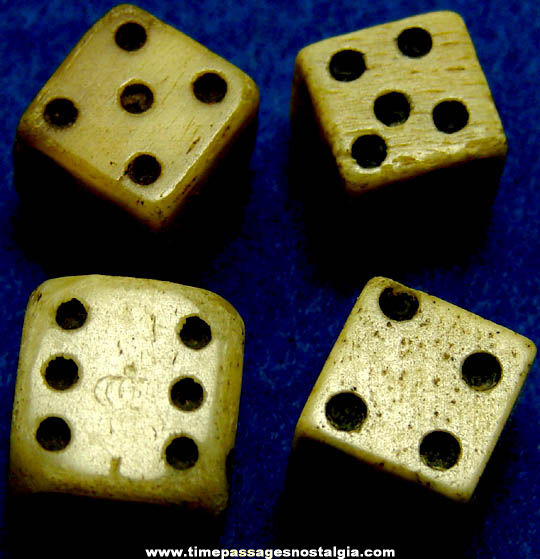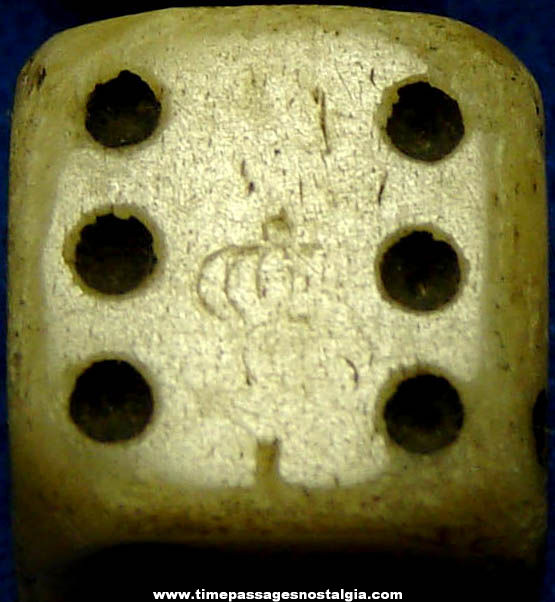
   | | Any group of items being offered as a lot must be sold as a lot. | | | Quantity Discount Prices
(when available) | | Worldwide Sales | You can feel secure
shopping with PayPal. | All Original Items.
No Reproductions | | We have an extensive inventory that is not yet on our web site. If there is something you are looking for and did not find, please send us your wish list. |  | | Fast Dependable Service | You don't have to be an eight year old to enjoy having
a childhood treasure. |
| | | | The picture shows a view of the (4) 18th Century Miniature Bone Dice in this lot. Also shown is a closer image of the largest die with its marking. It is difficult to see in the picture, but the largest of these (left bottom one) bears the mark of a crown and the initials ''G.R.''. Below here is some information found online about this tax mark: King George III - ''In 1764 the Sugar Act was passed. This reduced the molasses duty of 6d per gallon to 3d but Grenville enforced payment through stricter customs controls in the thirteen colonies. The Sugar Act did not raise as much revenue as had been expected so in March 1765 the Stamp Act was passed. It was to be implemented in America on 1 November 1765. The Act extended the British Stamp Act to America and taxed all newspapers, legal documents, licenses, dice, playing cards and official documents. Both of these pieces of legislation were passed easily by parliament despite colonial opposition. The result of the passing of the Stamp Act were the Stamp Act riots throughout the American colonies, beginning in August and culminating in the Stamp Act Congress in October. In America, 'no taxation without representation' became the cry. However, Grenville did not have to deal with the colonial problems that resulted in his policies because he was invited to resign by George III in July 1765.'' To judge the sizes, the largest die in this lot measures about 1/2'' wide. These are in excellent condition as pictured. |
|
Click on image to zoom.
  |